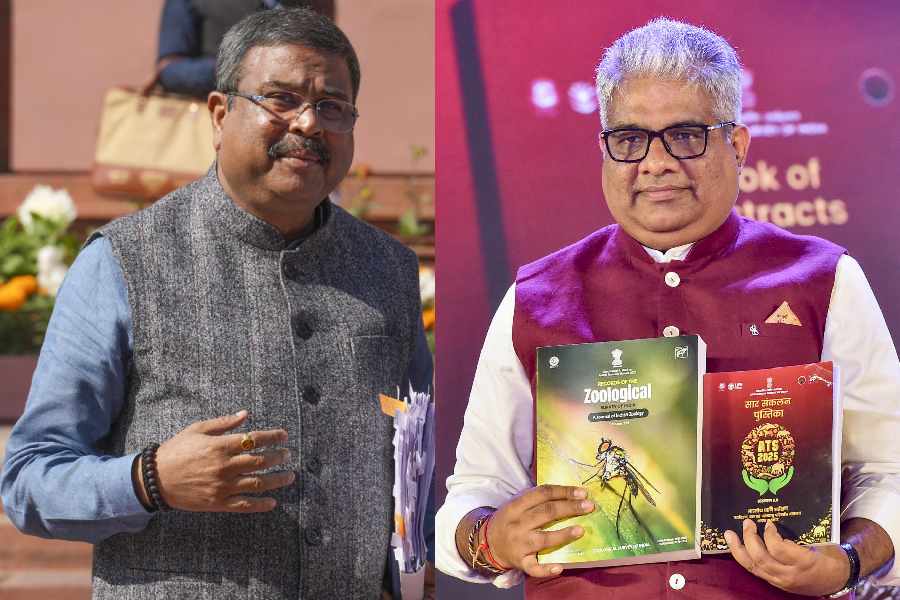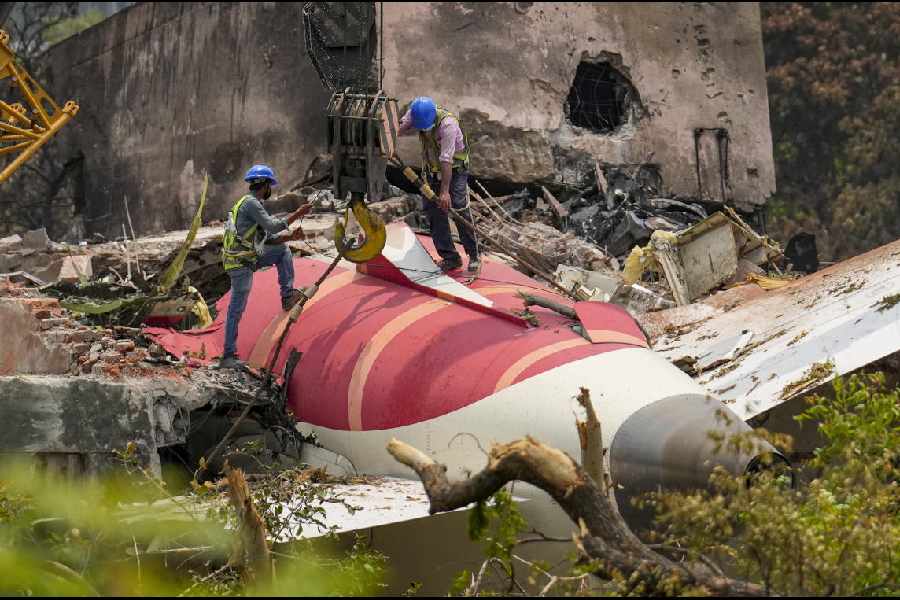 |
| Putin with Singh at the Kremlin on Monday. (PTI) |
Moscow, Oct. 21: India today offered a consolation prize of sorts to Russia by synchronising the timing of the first power outflow from the Kudankulam nuclear reactor in hot and humid Tamil Nadu with the summit meeting between Vladimir Putin and Manmohan Singh inside the grand Kremlin palace on a freezing, windy day.
It was a clever bit of planning to divert attention from the disappointment at not being able to clinch an agreement on the Kudankulam III and IV reactors, thanks to complications arising from India’s new liability law.
For the record, both Prime Minister Singh and President Putin made it a point to mention Kudankulam in their respective statements to the media after delegation-level talks as well as in the elaborate “joint statement on the 14th India-Russia Annual Summit”.
Speaking first, President Putin — looking rather like a Russian Daniel Craig with his broody eyes and dapper style — expressed happiness that Kudankulam I, which “went critical” in July, would be “joining the power grid in the next few hours”. He also mentioned plans to construct the contentious III and IV without mentioning any timeline.
Prime Minister Singh was more explicit. “The Kudankulam nuclear power project is an important symbol of our strategic partnership. We look forward to commercial power production from Unit 1 shortly.”
He went on to say: “I conveyed to President Putin our commitment to fully implement the road map on civil nuclear cooperation that was signed during his visit to India in 2010. We have directed our officials to resolve all outstanding issues that the earliest.”
The joint statement went even further: apart from the resolve to “expeditiously finalise” the pact on units III and IV, the two sides reaffirmed an earlier commitment for “additional nuclear power plant units at the Kudankulam site as well as in the construction of Russian-designed nuclear power plants at new sites” in India.
Clearly, New Delhi wants to do its utmost to mitigate the difficulties posed by the liability law — knowing full well that if the Russians balked at entering the field, there was precious little chance of any supplier from the West venturing into India’s complex civil nuclear energy field.
Energy focus
Officials later underlined that despite the hiccups that have delayed the pact on units III and IV, cooperation in the field of energy is the next big thing in India-Russia ties, with indications that energy might rival defence in the coming years.
For some time, there has been talk of a possible pipeline project to tap Russia’s huge gas reserves. This was put down in writing in the joint statement, which said: “Both sides also agreed to explore the possibilities of direct transportation of hydrocarbons from Russia to India through the land route. The sides agreed to set up a joint study group in this regard.”
Foreign secretary Sujatha Singh later admitted that such a pipeline was “some way in the future” but called it a “visionary project” that would one day fructify.
While the pipeline might seem a bit of a pipe dream for now, some mega-projects in the hydrocarbons sectors have already got off the ground. ONGC Videsh Ltd (OVL), for instance, is actively involved in oil exploration and extraction in the Sakhalin and Tomsk regions of Russia, and India today “expressed OVL’s interest in participating along with Russian companies in exploration of hydrocarbons in the Arctic region.”
Russia remains India’s oldest and biggest defence supplier across the spectrum — from fighter aircraft to nuclear submarines to tanks to aircraft carriers. In fact, the aircraft carrier INS Vikramaditya is expected to be finally handed over to India in the middle of November.
But while India has “diversified” its defence cooperation with a range of other nations too, when it comes to “across-the-spectrum” energy, Russia is increasingly becoming the best bet it has.










